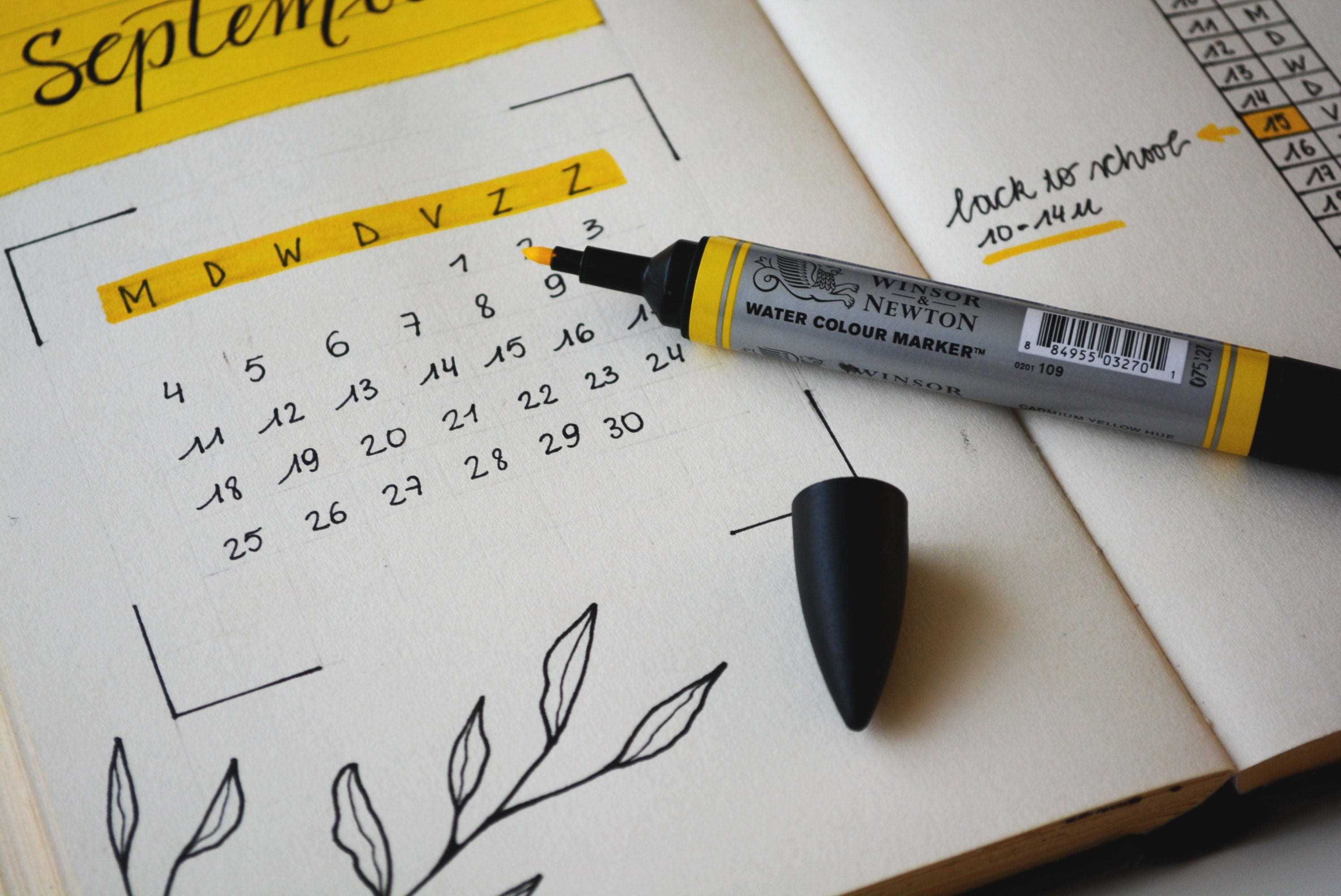We are all busy and looking for ways to simplify our lives and be more productive. Journaling has been around for ages and is a beneficial way to release the thoughts in our heads and put them on something physical. There are many journaling options and one rising option is a bullet journal.
Bullet Journals were created to make things easier. If you follow the intent of the creator, then bullet journals are not a waste of time, but a time saver. Though like most things in life, there are other options if bullet journaling is not for you.
This article is going to explore the more about bullet journals, how to use one, why you might want one, and other helpful alternatives. Read on to find out how you can use a bullet journal to boost your productivity.
Bullet Journals: The Path to Productivity
The basic idea is that you have a clean, empty journal, or book. You label the first page as “Index” and then go through and write page numbers on every page. The index should cover 1-2 pages. After that, you’ll want a future log that covers pages 3-4 and then add future dates to pages 5-6. Then you can start on page 7 with the current day.
You start by putting a title on your list, such as the date, and then do something called rapid logging where you make a list of what you want to do and remember for the day. Once the list is made, you can put symbols next to the bullet statements to put them into categories.
As the day goes on, you can add more tasks, notes, and events, and as you complete the tasks, you can put an x next to them. (source: The System)
Bullet Journals Take a lot of Time
The purpose of bullet journals is to make things easier, but social media has made it seem harder than it really is. If you look at Instagram, you will see many accounts dedicated to bullet journals. The photos show beautifully decorated pages with a variety of colors and drawings.
You see long supply lists of must-haves for bullet journaling such as pens in every color, correction tape, and stencils. These are great if you are a creative person and need an outlet for your creativity, but they are not necessary to have a successful bullet journal.
You can follow the basic steps of bullet journaling and still find success. An important thing to do is to take a step back and think about what the purpose of your journal is. Are you journaling to get more organized? Are you journaling to reduce stress? There are no right or wrong reasons to journal, but knowing your reason will help you find a journal system that will work best for you. (source: Are Bullet Journals A Waste Of Time)
Journaling Can Be Beneficial
Any type of journaling will have benefits, though. If you find that bullet journaling is not your cup of tea, then there are a plethora of other options you can try.
Below is a table that shows five popular journal systems and some benefits of journaling. This list does not show all the benefits of journaling, nor is completely accurate for every person, as journaling is subjective, but as you look at them, you can see that the different journal systems provide different benefits.
|
|
Bullet |
Free Write |
Planner |
Gratitude |
Specialty |
|
Improve organization |
x |
|
x |
|
|
|
Creativity |
x |
X |
|
x |
x |
|
Manage stress |
x |
X |
x |
x |
x |
|
Track progress |
x |
|
|
|
x |
|
Work through emotions |
|
x |
|
|
x |
|
Save time |
X |
|
x |
|
|
(Source: How to Journal)
If your purpose is to be better organized and to save time, then bullet journals would be a good choice. It may be helpful to go back to the basics of bullet journaling and see if it accomplishes its purpose of being productive in your life.
Focus on one day at a time and do your daily purging. It should only take 5-10 minutes a day, depending on your personal goals. If, after a month or two, you still feel like it is wasting your time and not helping you become better organized and more productive, then you might consider looking at other journaling options. (source: Are Bullet Journals A Waste Of Time)
Bullet Journals: What Else You Can Do
If you are seeing more productivity in your life due to your bullet journal use, then it may be time to add more to your journal. Your bullet journal is a blank slate, and you can add or remove whatever you wish to make the journal work for you.
Once you have gotten into the habit of the daily log or list, the next step is to make a weekly log. It should be similar to your daily log, but a weekly log obviously allows you see the entire week at a glance. You can use one or both if you desire.
Another thing you can start doing is making collections. Collections are not to do lists, but instead are a reference list of goals or ideas that you do not want to forget. Some collection ideas are books to read, recipes to make, fitness tracker and meal planning. (source: Bullet Journal Set Up Guide)
Recommended Bullet Journal Supplies
The great thing about bullet journals is that you do not need to use a paper journal. There are different mediums that you can use for the journal, such as:
Basic journal: This can be any type of notebook like the Wanderings Journal, but other common journals are the Moleskine and the Leuchtturm. Your journal can be blank, or it can have lines or dots.
Additionally, for a paper journal you may also find the following items beneficial:
- Pens to write and bring in some color.
- Stencils to add some creativity.
- Washi tape to help with organization.
(source: Bullet Journal Set Up Guide)
Why A Bullet Journal Is Not Just A Planner
At first glance, a bullet journal and a planner seem very similar. They both cover daily activities and can have calendars and weekly layouts to schedule your life. However, there are some distinct differences.
|
|
Bullet Journal |
Planner |
|
Schedule |
X |
X |
|
List of Tasks |
X |
|
|
Notes |
X |
|
|
Journal comes in variety of sizes/styles |
X |
x |
|
Customizable |
x |
|
If you just want to schedule your day, week, or month and nothing extra, then a planner is perfect for you. If you want to go further by adding tasks to your schedule, making notes or details and having a list of important topics, then a bullet journal is good choice. (source: Planner vs Bullet Journal)
Other Journaling Options
Journaling is not one size fits all. If one system does not meet your needs, find another one that does. There are five popular journaling systems. These journals are all different and can meet your different needs. (source: Perfect Type of Journaling)
If you like using a bullet journal but prefer not to use a paper journal, then are several options for what you can use instead. One is to use google or similar calendars, like the reminder app on your phone, to keep track of appointments and other reminders so that you do not need to make your journal a calendar.
Another option is to use Evernote, a digital journaling software. Evernote syncs with your phone and computer and you can write notes and save information within a file system. It can also be used to take notes in school or meetings at work.
Final Thoughts
Bullet journaling can be an incredible way to organize your thoughts and increase creativity and productivity alike. However, a bullet journal can be time-consuming, so it may not be the best option for someone who is always on the go. Giving it a try is always a good idea; if you hate it, you can switch up your journaling methods, and no one even has to know.

